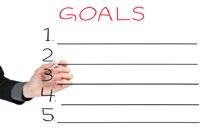LITERACY -ICT TEACHING STRATEGIES As Brindley (2000, in Gamble and Easingwood, 2000, p.1) states “ICT stands in interesting relation to literacy, being as it is capable both of supporting and promoting the basic skills of reading and writing - the dominant classroom definition of literacy.” Yet, when ICT is being used to support the teaching and learning of literacy, it is the literacy objectives that remains the main focus of the lesson. Therefore, the following strategies will help you develop confident readers and writers in an ICT-integrated, digital society.
Planning for Integration
It is said that thoughtful and thorough preparation is the hallmark of all effective teachers” (Taffe & Gwinn, 2007, p. 59). However, whenever you are preparing to incorporate the use of ICT activities into the literacy curriculum, which it takes on new and multifaceted dimensions for those who successfully integrate technology into their instruction. So you will need to focus on what you do individually as well as in collaboration with others to prepare for this instructional time. Step 1. Determine what your instructional objectives are The context of this resource covers the following curriculum objectives: STRANDS Language
Literature
Literacy
DESCRIPTION ACELA1793 - Identify features of online texts that enhance readability including text, navigation, links, graphics and layout. ACELA1496 - Explore the effect of choices when framing an image, placement of elements in the image, and salience on composition of still and moving images in a range of types of texts. ACELT1603 - Discuss literary experiences with others, sharing responses and expressing a point of view. ACELT1794 - Create literary texts by developing storylines, characters and settings. ACELY1692 - Use comprehension strategies to build literal and inferred meaning to expand content knowledge, integrating and linking ideas and analysing and evaluating texts ACELY1694 - Plan, draft and publish imaginative, informative and persuasive texts containing key information and supporting details for a widening range of audiences, demonstrating increasing control over text structures and language features. ACELY1697- Use a range of software including word processing programs to construct, edit and publish written text, and select, edit and place visual, print and audio elements.
However, there will be many other opportunities to create throughout your literacy teaching and learning. Step 2. Determine a starting point for students It will be important to use your knowledge of students in your instructional planning. In this part of your planning you will need to consider: © ICTE Solutions Australia 2018
31






